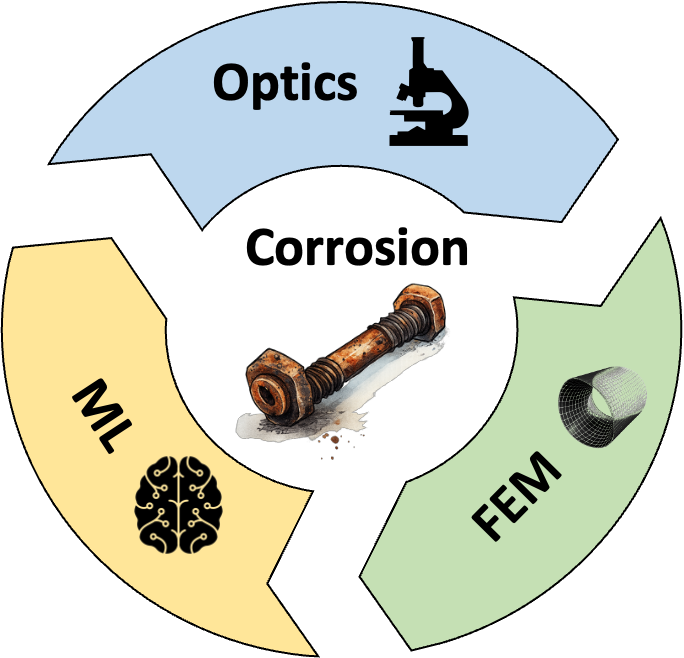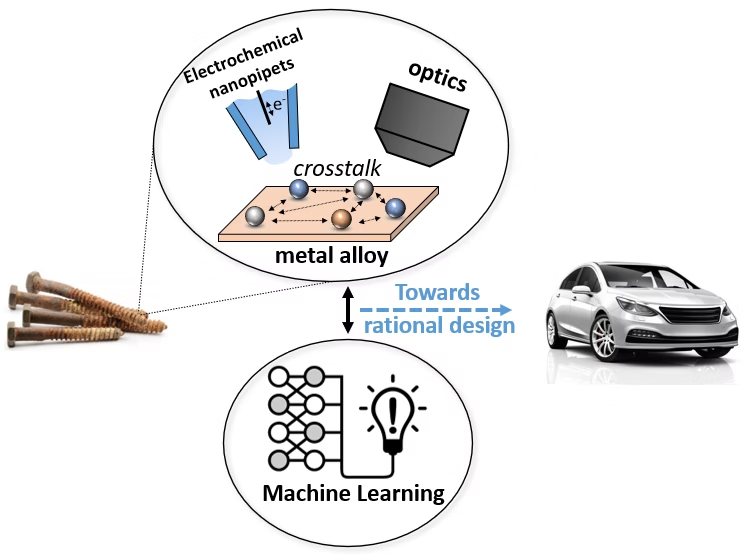Research
Focused on metal material stability, durability, and corrosion, our team primarily develops and applies optical methods—often complemented by surface chemistry-sensitive X-ray techniques—to corrosion research. To leverage the high-throughput capabilities of optical methods, we develop machine vision approaches including automatic image segmentation, object recognition, clustering, and classification, all aimed at automated and accelerated retrieval of corrosion-relevant information. The ultimate goal of scientific discovery is rigorous rationalization through modeling and simulation. Accordingly, we employ finite element simulations in the COMSOL environment to elucidate corrosion mechanistic sequences and optical responses.

Projects
OCTAWA 2023-2026
As of July 2022, I am a recipient of ANR JCJC grant with the start from January 2023. ANR JCJC is a grant provided by the National Agency for Research in France for young researcher at the start of their independent research career.
Correlative imaging of crosstalk between single entities in metal alloys
The urgent need of increased energy efficiency and durability of materials is pushing forward the development of novel metal materials with improved specific strength, light density, recyclability, and biodegradability for a wide scope of practical applications ranging from space and automobile industries, energy sector and biomedicine. These novel materials are often nanostructured and are composed of multiple micro and nanoparticles, impurities, crystallographic grains and grain boundaries (or single entities) of varying chemical composition and structure, embedded in an electrically conductive matrix. The modern experimental strategies to assess these materials are focused mainly on the measurements of reactivity of isolated single entities and then, the bulk properties of the material are merely deduced from the sum of its individual parts. However, numerous experimental evidence show that it is not the case for contemporary nanostructured interfaces used in corrosion. Under operating conditions, the single entities of modern materials form a complex network of interactions called a crosstalk that defines the bulk material performance and that is difficult to anticipate solely based on the properties of isolated single entities. The screening of these systems is a challenging experimental task, first because, unless under forced corrosion, no current is exchanged with an external device, and therefore wide field highly resolved electrochemical measurements are required to follow both, reactivity at single entities down to the nm scale and their crosstalk up to the μm scale, simultaneously. The theoretical analysis of emerging properties is not a trivial task either since the elaboration of both, mechanisms at the single entity level and their consequences on reaction of surrounding neighbors are required. The combination of experiment and theory should provide intelligent design of the desired crosstalk communication. Developing strategies to access the fundamental electrochemical properties of the crosstalk, rationalize and utilize it for intelligent material design are complex and important issues that I aspire to solve in this project.
